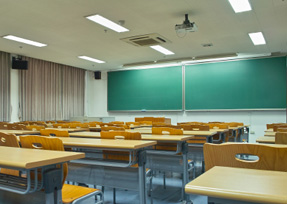Using occupancy sensors:
Occupancy sensors in schools help turn off unwanted lights that may have been inadvertently left on by students. Types of occupancy sensors that are used in schools are motion detectors and carbon dioxide sensors. Motion sensors work on the principle that if someone is within the room a certain amount of activity will be undertaken. On the other hand a carbon dioxide sensor has the added benefit of being able to determine the number of people in the room. These sensors can be connected to the HVAC system to maintain the room’s lighting and temperature at an appropriate level of comfort.
Why use ultrasonic sensors:
Ultrasonic occupancy sensors can be installed in the lobbies of schools to ensure that lighting is turned down in the lobbies and hallways automatically when there are no occupants. Microphonics sensors combine a microphone with a passive infrared sensor in order to detect anyone occupying a room. These sensors work well in areas where there are number of obstacles such as rooms where there are a number of cubicles.
The motion is first detected using PIR and then the microphone turns on to listen to noise levels within the room. These sensors are able to filter out background noises. The best place for occupancy sensors in schools are gymnasiums and stack areas of libraries.
Energy efficient lighting in schools:
The installation of energy efficient lighting is another manner in which energy savings within the school may be achieved. Using energy efficient fluorescent bulbs can cut costs drastically. Combined with occupancy sensors, the life of the bulb can often be prolonged. Class rooms may also be equipped with photocells in order to ensure that the lights are dimmed if there is an adequate amount of sunlight available. Sensors may also be used to switch on lights around the campus grounds when natural light falls below a certain limit. These may be combined with timers which will switch off these lights at a particular time when the school is empty.
Occupancy sensors can be used effectively in rest rooms. The lights can be turned on and off in the rest room depending on whether anyone is using it, it can also be combined to switching the exhaust fans on or off, while a person is occupying it.
Using a plug load control:
Other tips to ensure that schools are energy efficient include the use of plug load controls. Plug load controls can turn appliances on or off when ever someone enters a room. This is a number of power sockets attached to a sensor which detects occupancy and triggers appliances that are connected to the board. Exit signs in a school should be replaced with LED signs, as these are more energy efficient as they consume less amount of power.










